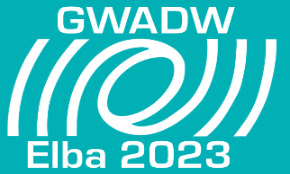Speaker
Description
The Einstein Telescope (ET) is a planned third-generation gravitational-wave detector that includes a low-frequency (LF) and a high-frequency (HF) laser interferometer.
Cryogenic operation of ET-LF is imperative for exploiting the full scientific potential of ET, with mirrors operated at temperatures of $10\,\mathrm{K}$ to $20\,\mathrm{K}$ in order to limit thermal noise.
Thermal shielding is essential to support the cool-down process and to reduce both the particle adsorption and the heat load on the optics.
Additionally in steady-state operation, mechanical vibrations must be kept to an absolute minimum to limit the noise input by scattered light.
We present the development progress of a thermal shield surrounding the cryogenic payloads of ET-LF, which considers rapid cool-down and low vibration in steady-state operation.
During cool-down, cooling tubes enable the flow of supercritical helium, driving the shield temperature decrease by forced convection.
For steady-state operation, the shield cooling mechanism is converted to heat conduction at $2\,\mathrm{K}$ via static He-II in the same tubes.
The conceptual design status is explained by means of analytical and numerical modeling results.

